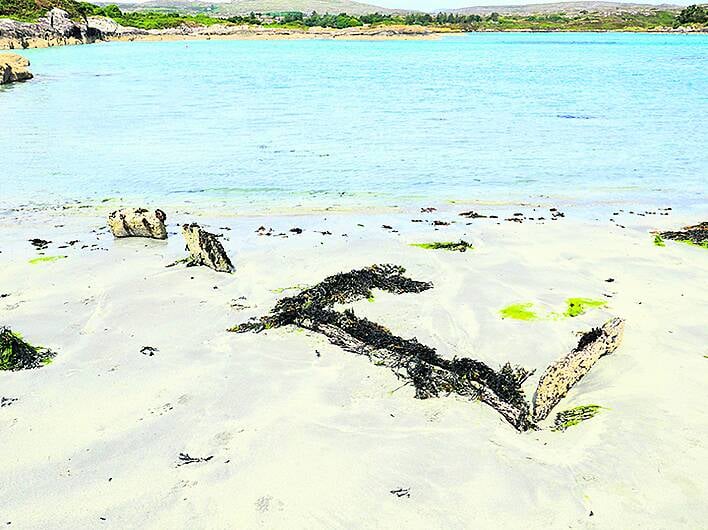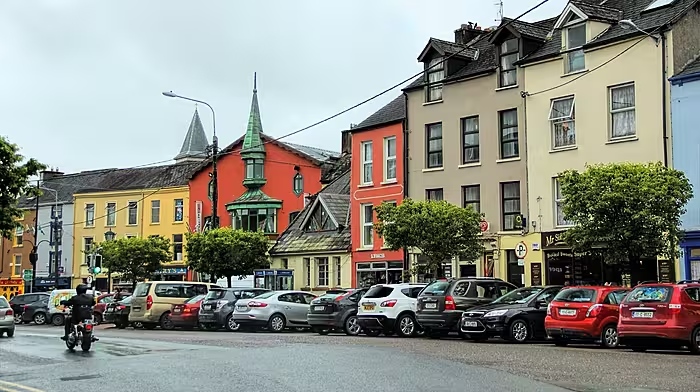A Bronze age site, dating back at least 3,000 years, has been discovered at the Mizen's Ballyrisode beach.
A BRONZE age site, dating back at least 3,000 years, has been discovered at the Mizen’s Ballyrisode beach.
An odd grouping of stones was observed at the popular swimming spot by Robert Harris and Finola Finlay.
Finola, who has a masters degree in archaeology from UCC, was struck by the rectangular stone-lined pit and felt pretty sure it wasn’t just a natural phenomenon.
She used social media to put out feelers and almost immediately confirmed it was a fulacht fia, or open air kitchen.
Finola, originally from Bray, and Robert from the UK, retired to Rossbrin, Ballydehob from Canada six years ago.
About their Bronze Age discovery they explained: ‘Three sides of a rectangle were defined by stone slabs laid on their sides in the sand, while two other upright slabs stood close by. It had all the appearance of a carefully constructed trough, with one side missing, and it immediately reminded us of the cooking site at Drombeg Stone Circle.’
A group of archaeologists who had excavated an almost identical site in Sligo confirmed the discovery as an intertidal fulacht fia.
An article on the couple’s blog explains: ‘The water in the trough was brought to a boil by dropping very hot stones into it, and therefore another feature of a fulacht fia is a hearth for heating the stones. Once the stones were used up (after heating and cooling one or more times they cracked and broke) they were tossed aside and over time a horseshoe-shaped mound of these burnt and shattered stones accumulated around the trough.’
A similar site exists at Lispatrick in Courtmacsherry bay, but sand has rendered it invisible for the past eight years.
‘The Ballyrisode fulacht fia appears to be stable but who knows if in a few years sand drifting will make it more or less visible?’ asked Finola. She described their discovery as very exciting. ‘It’s wonderful to know there are still things out there waiting to be discovered.’







